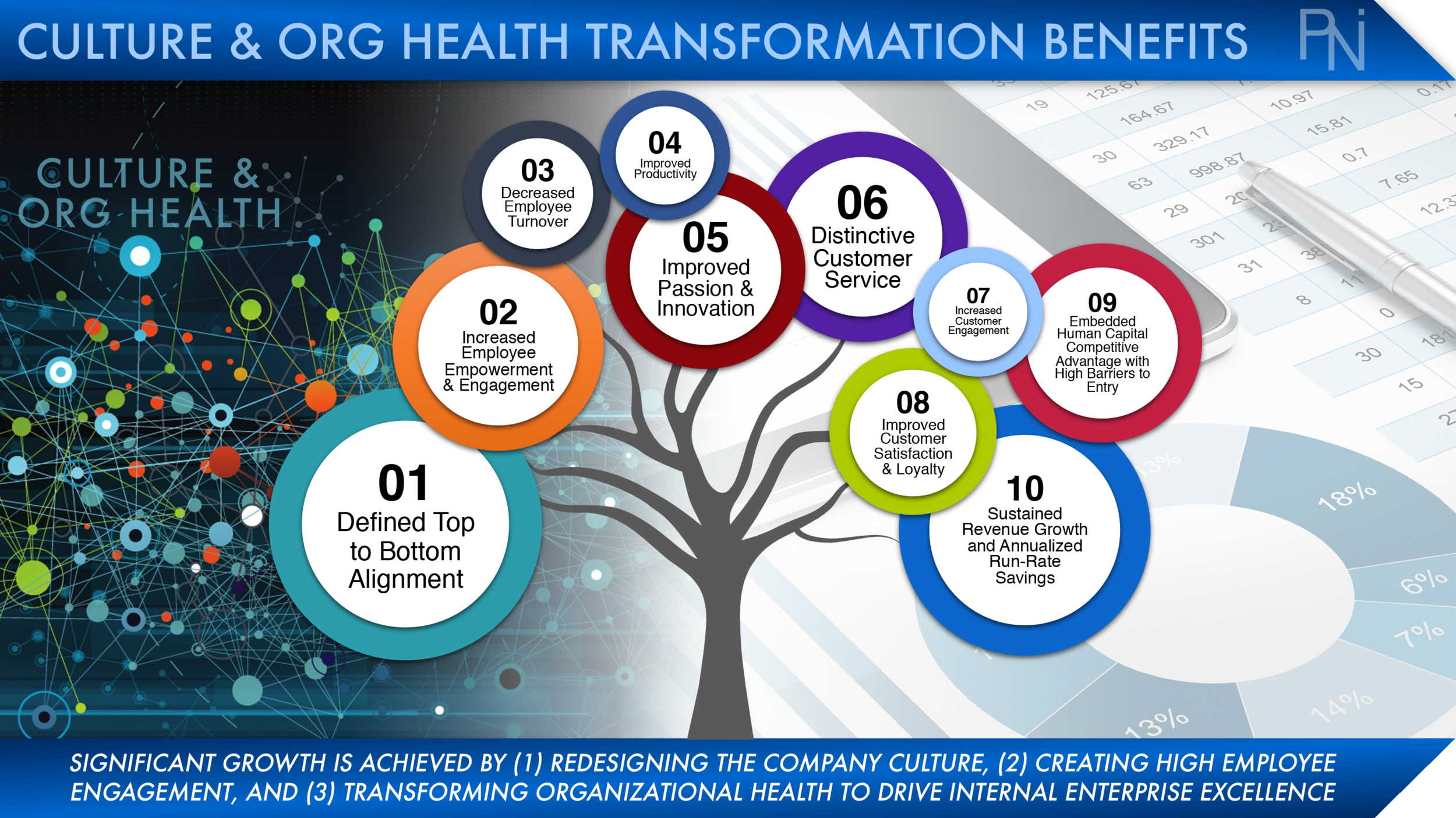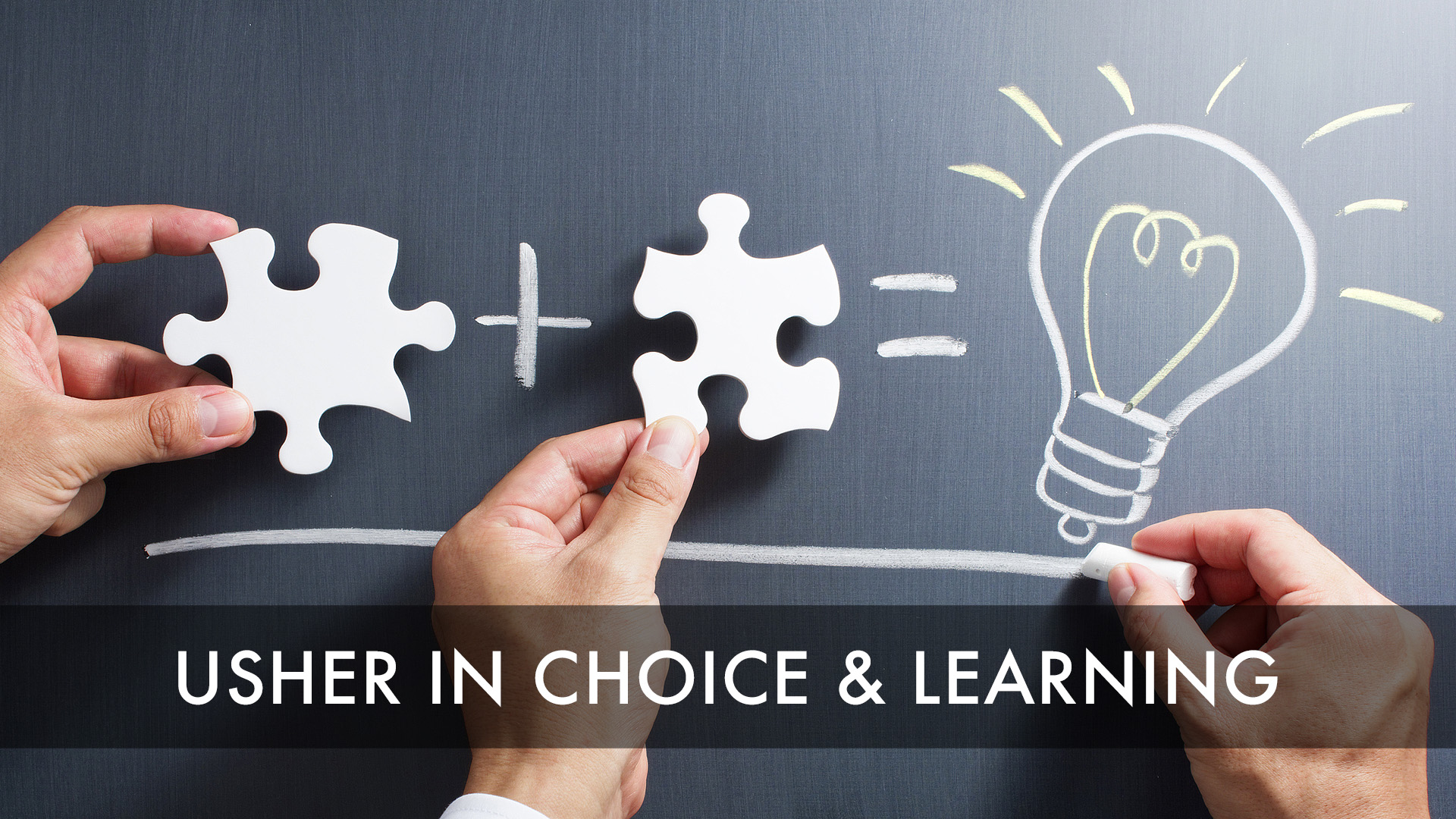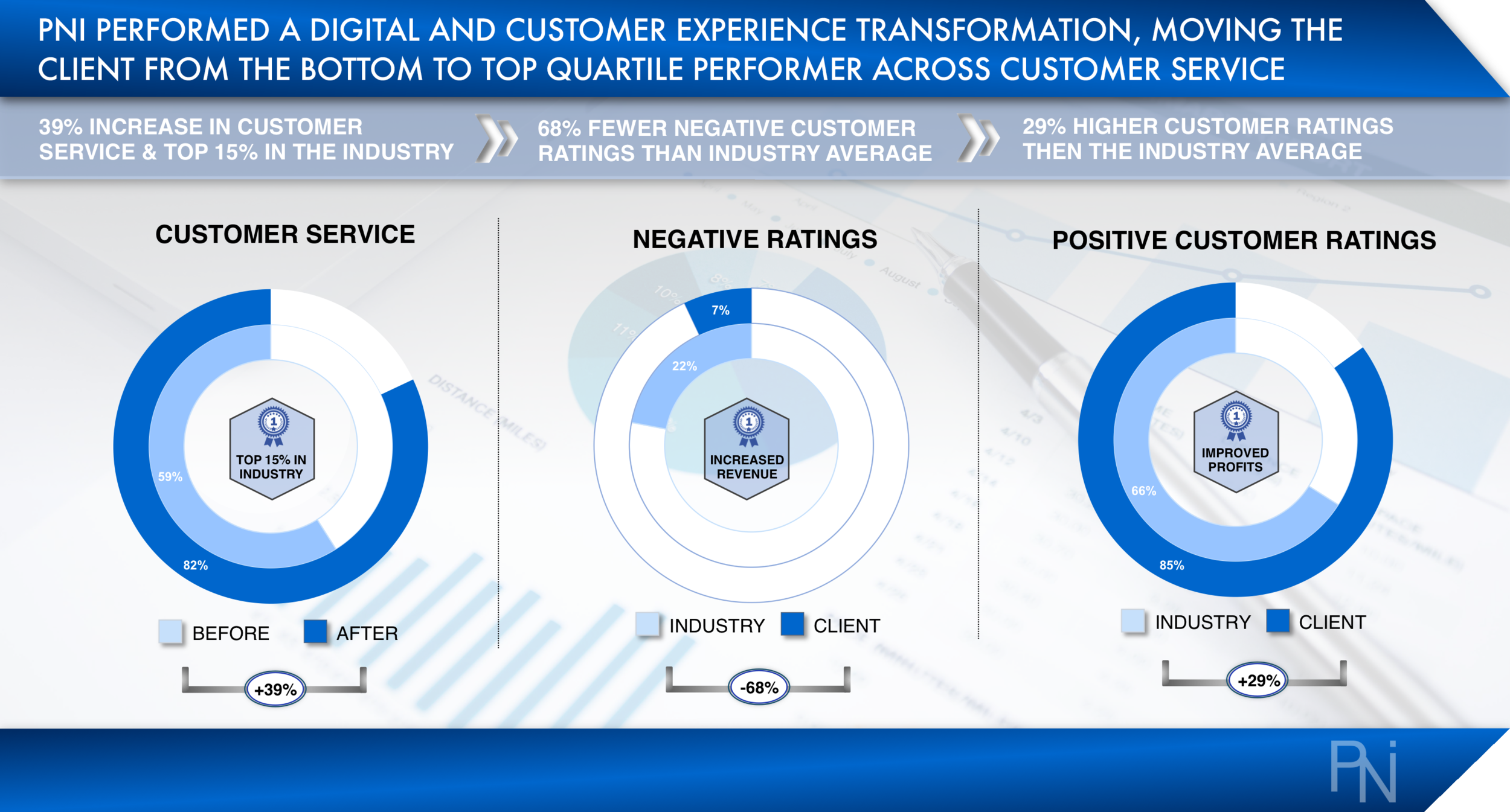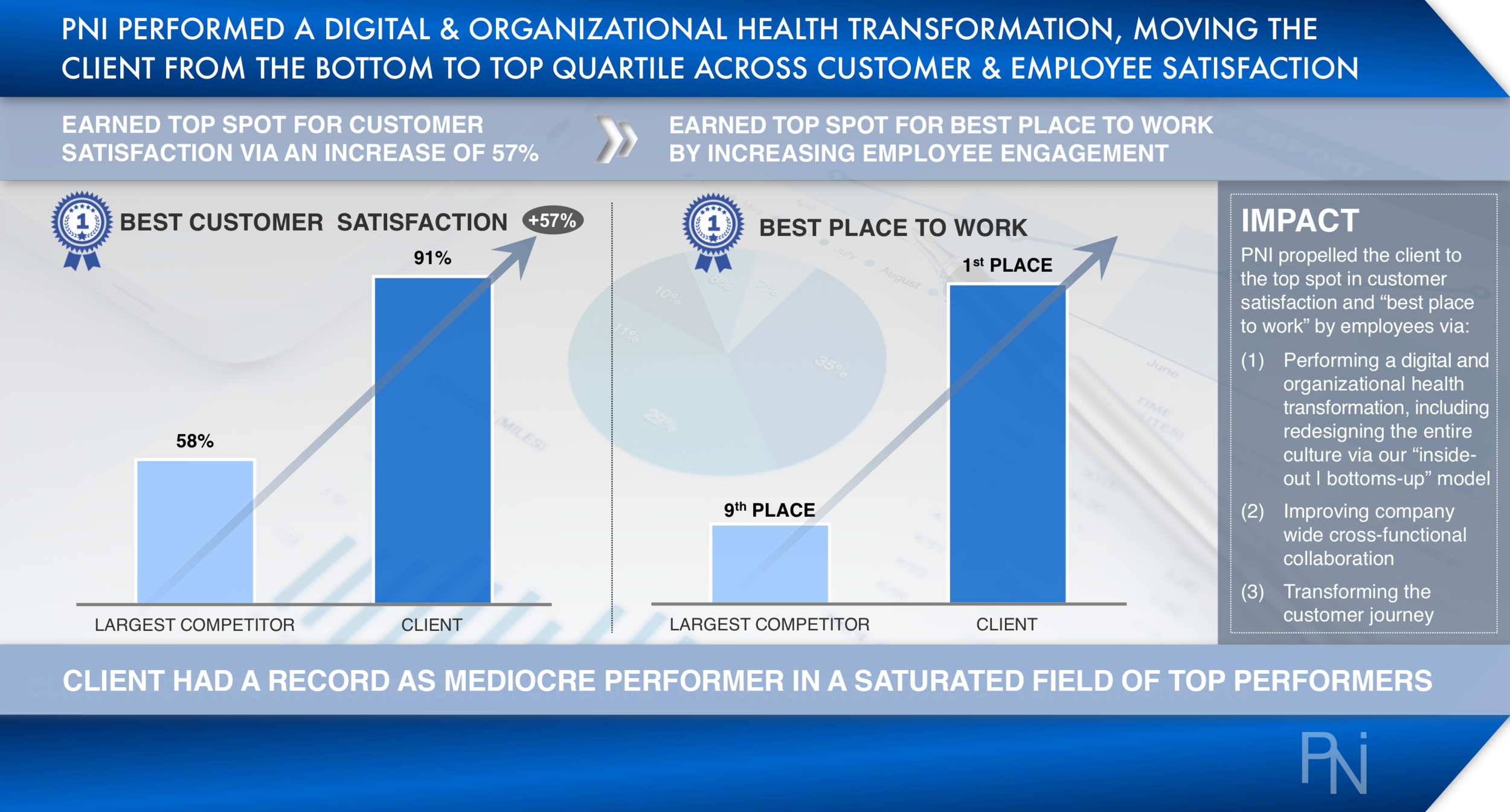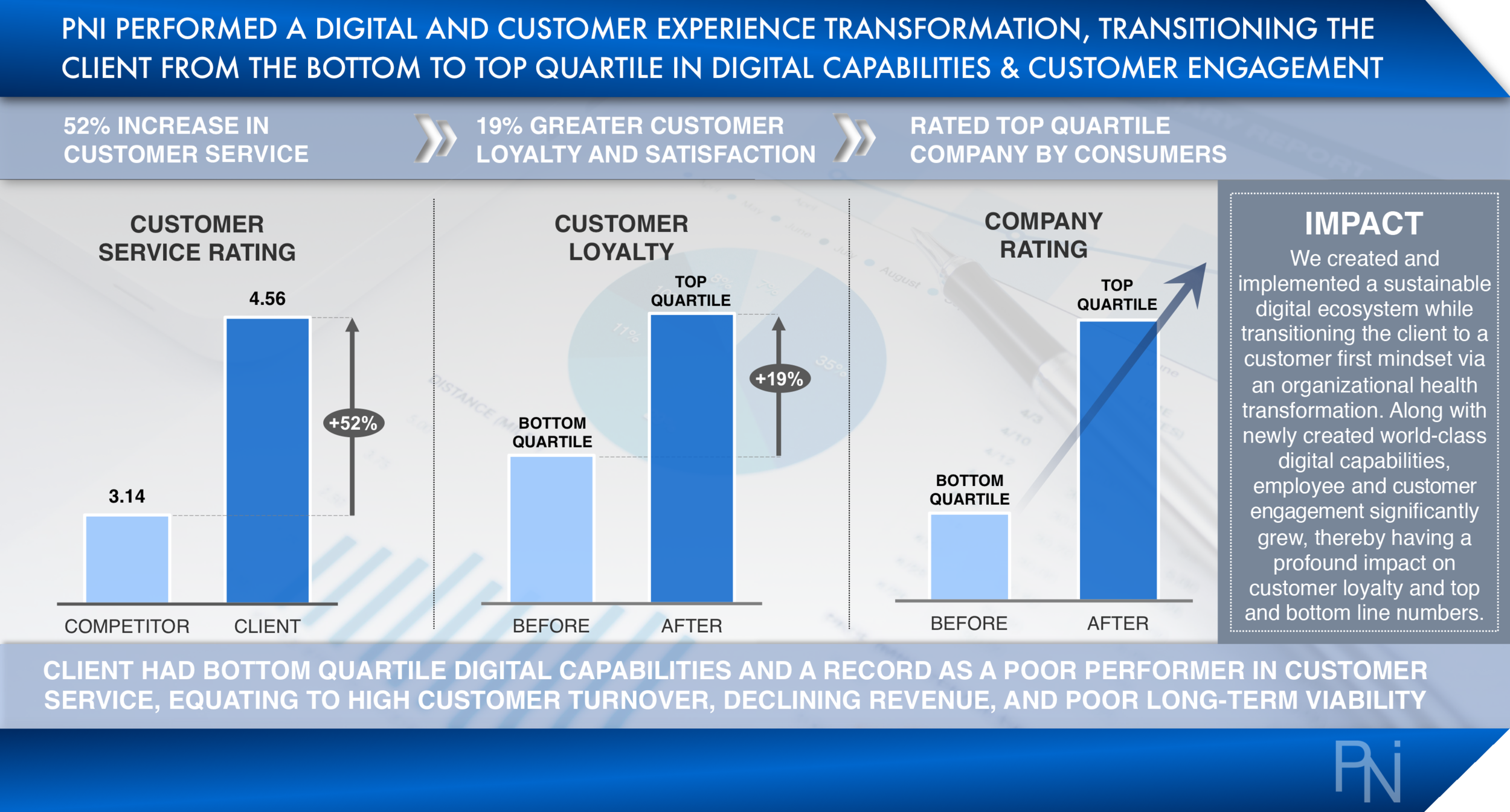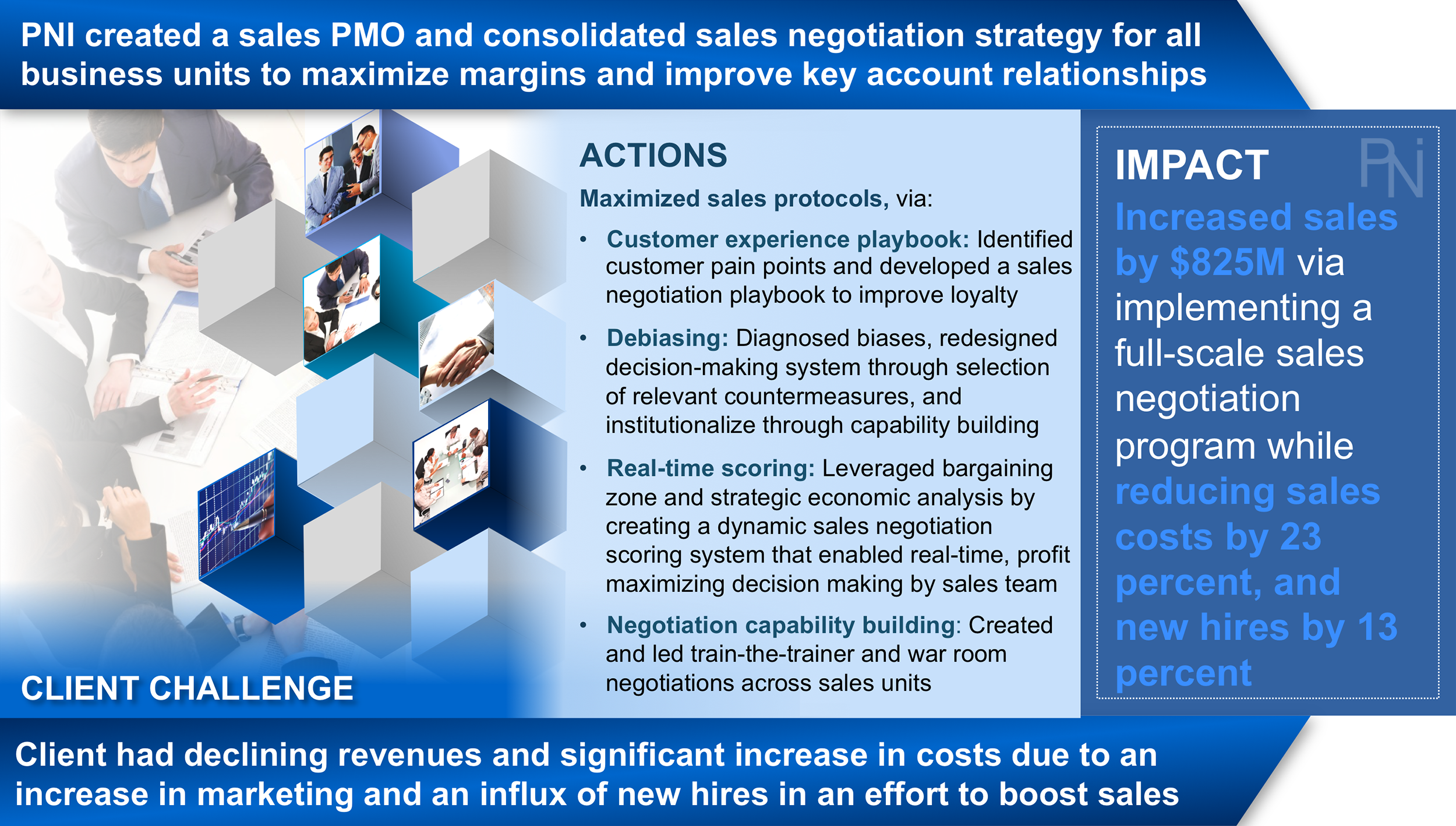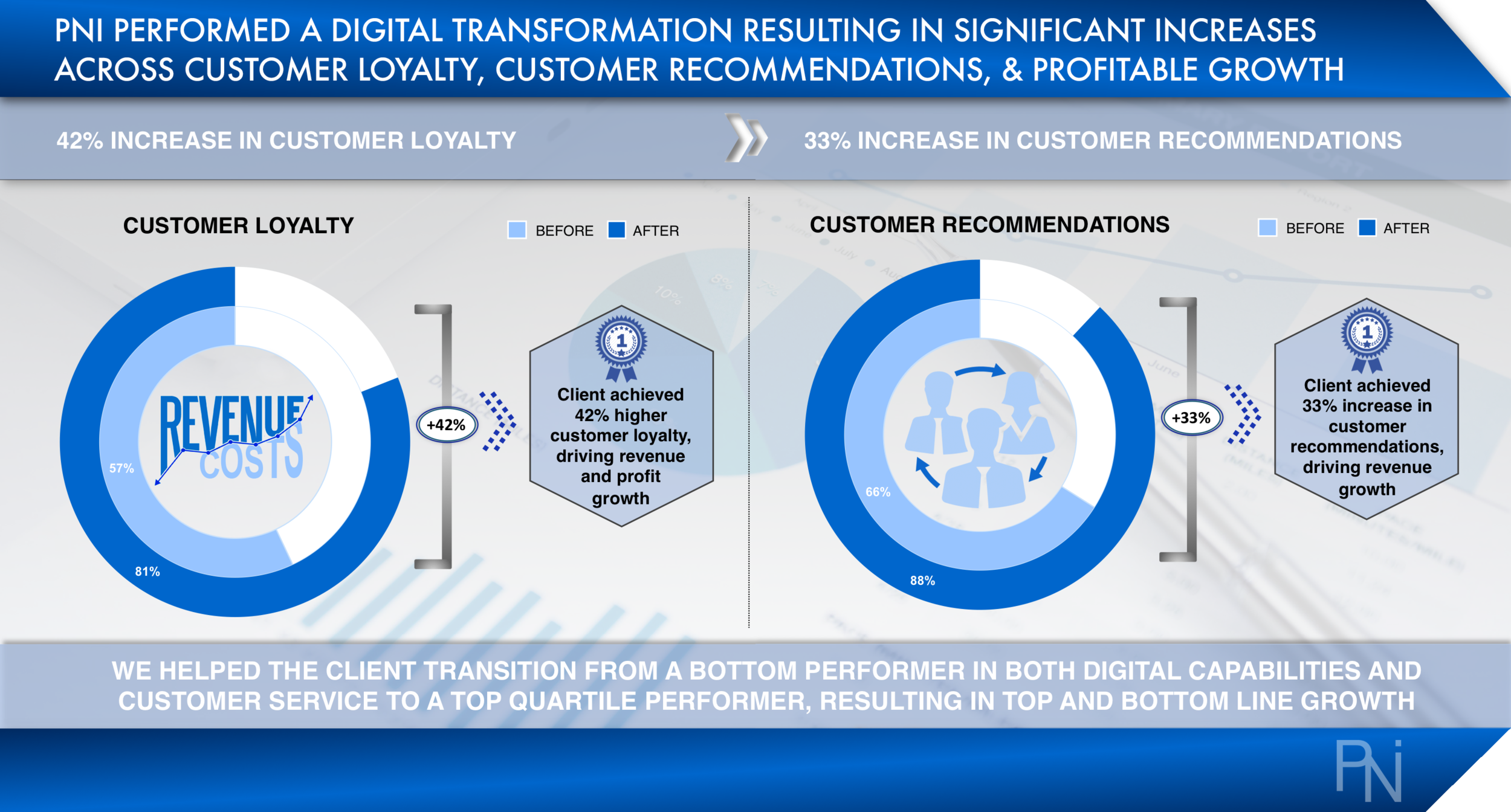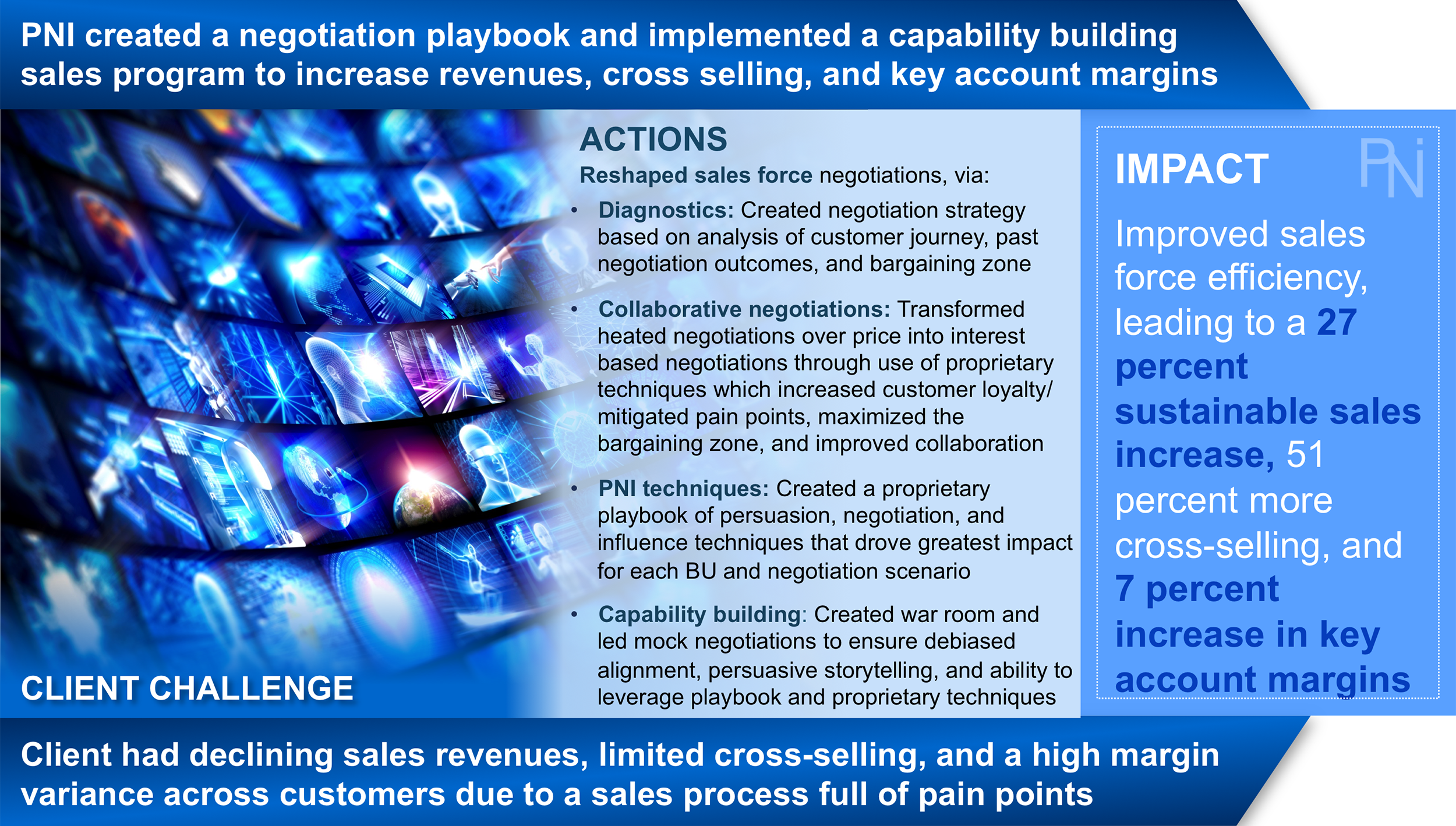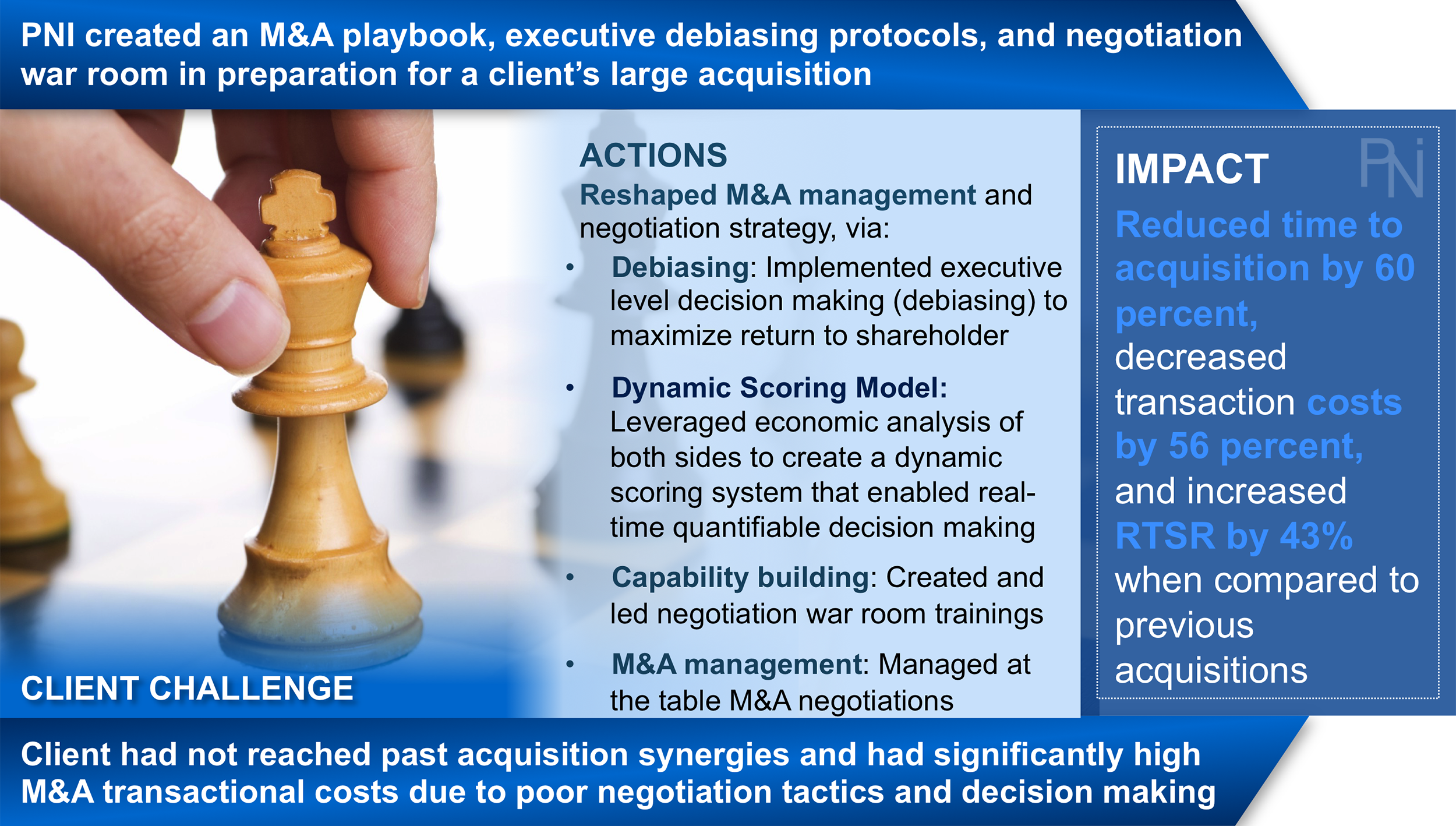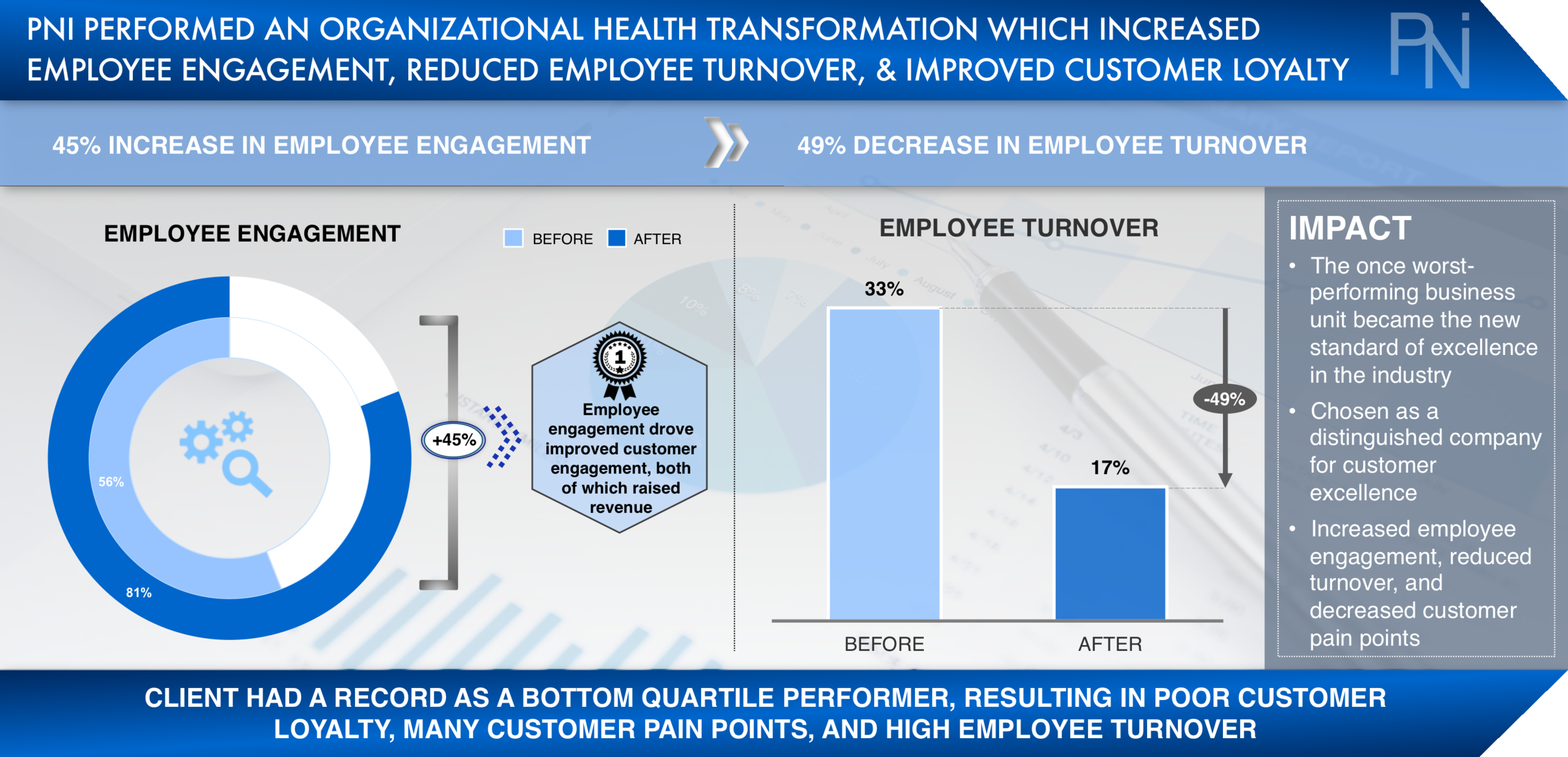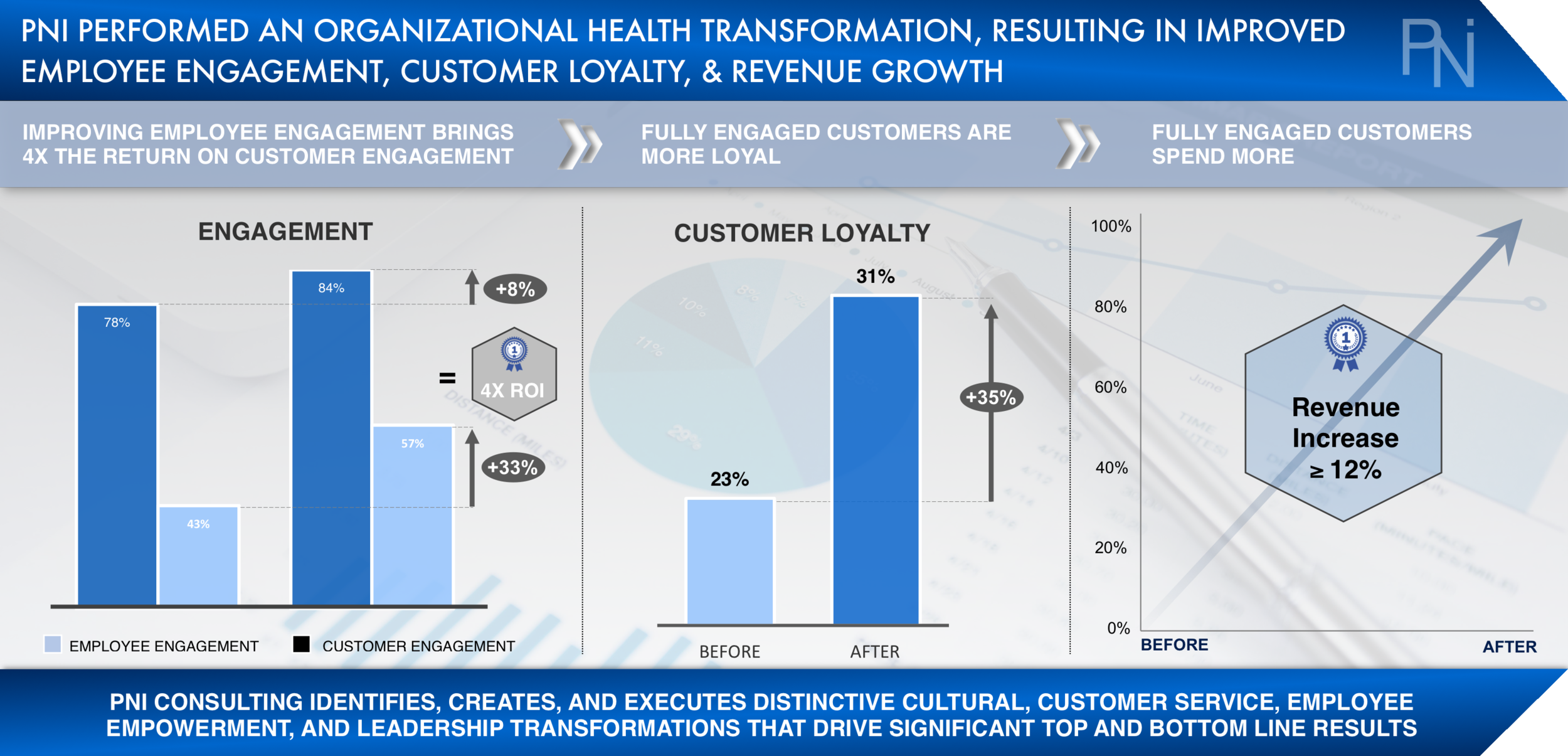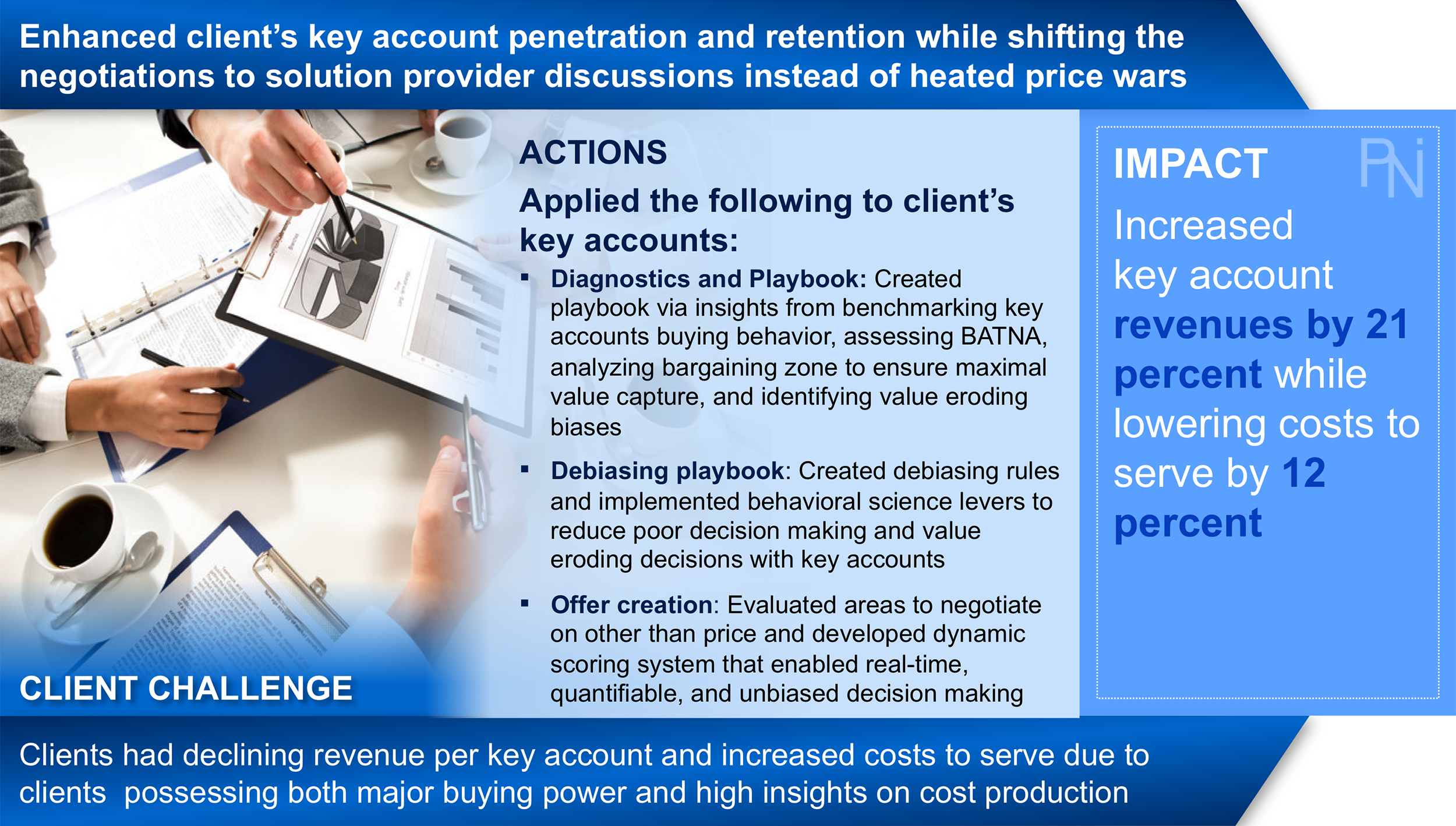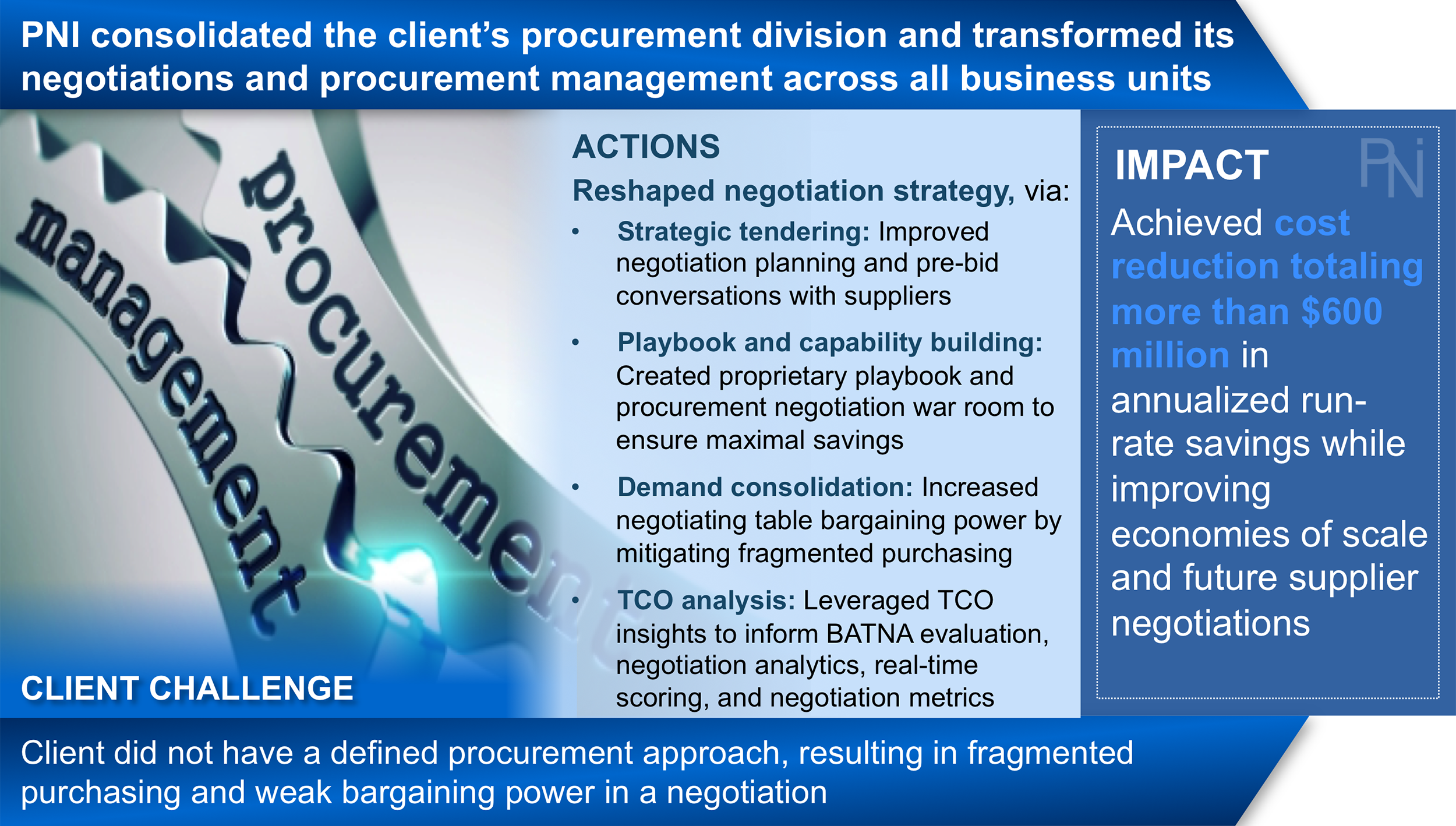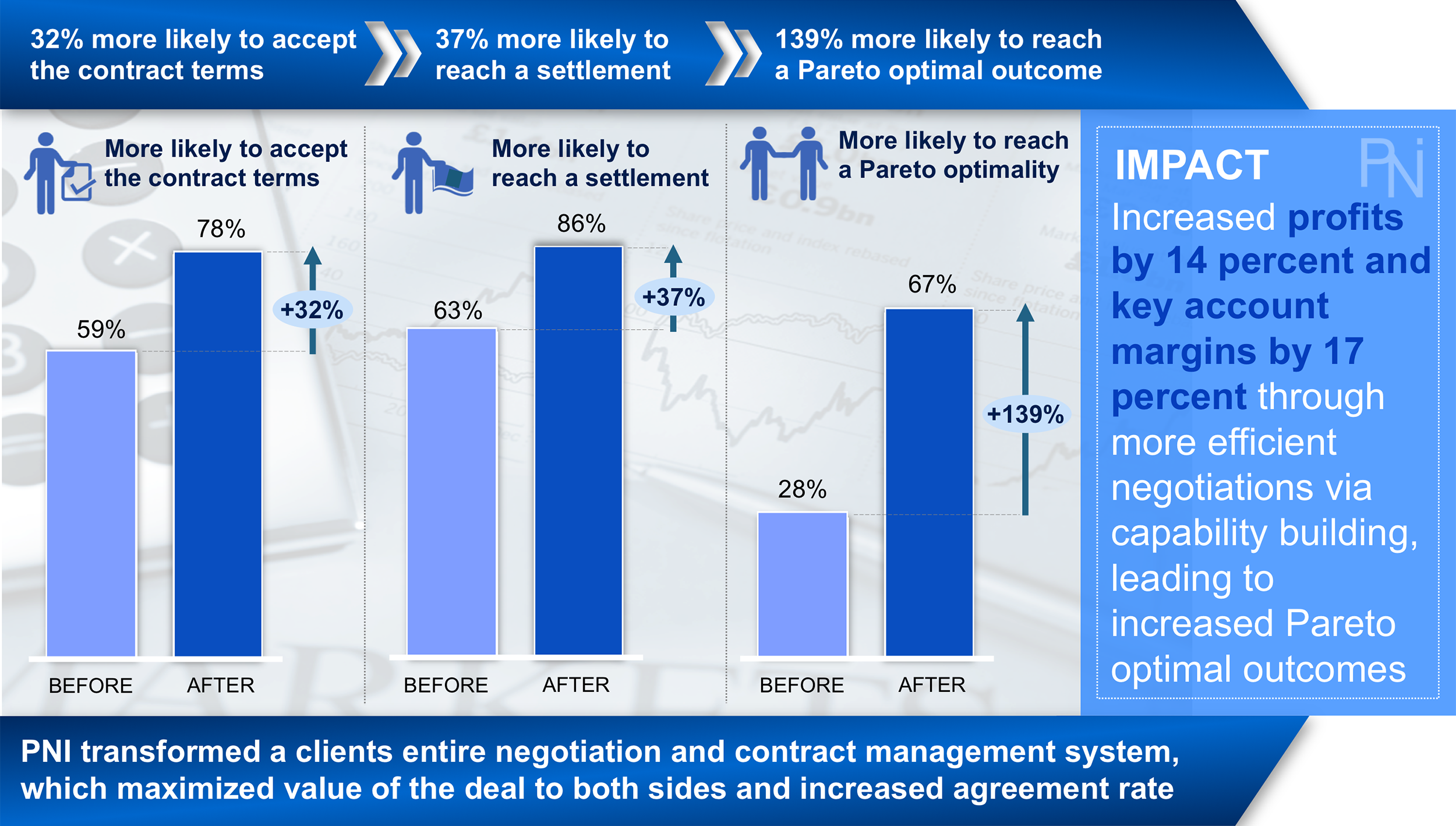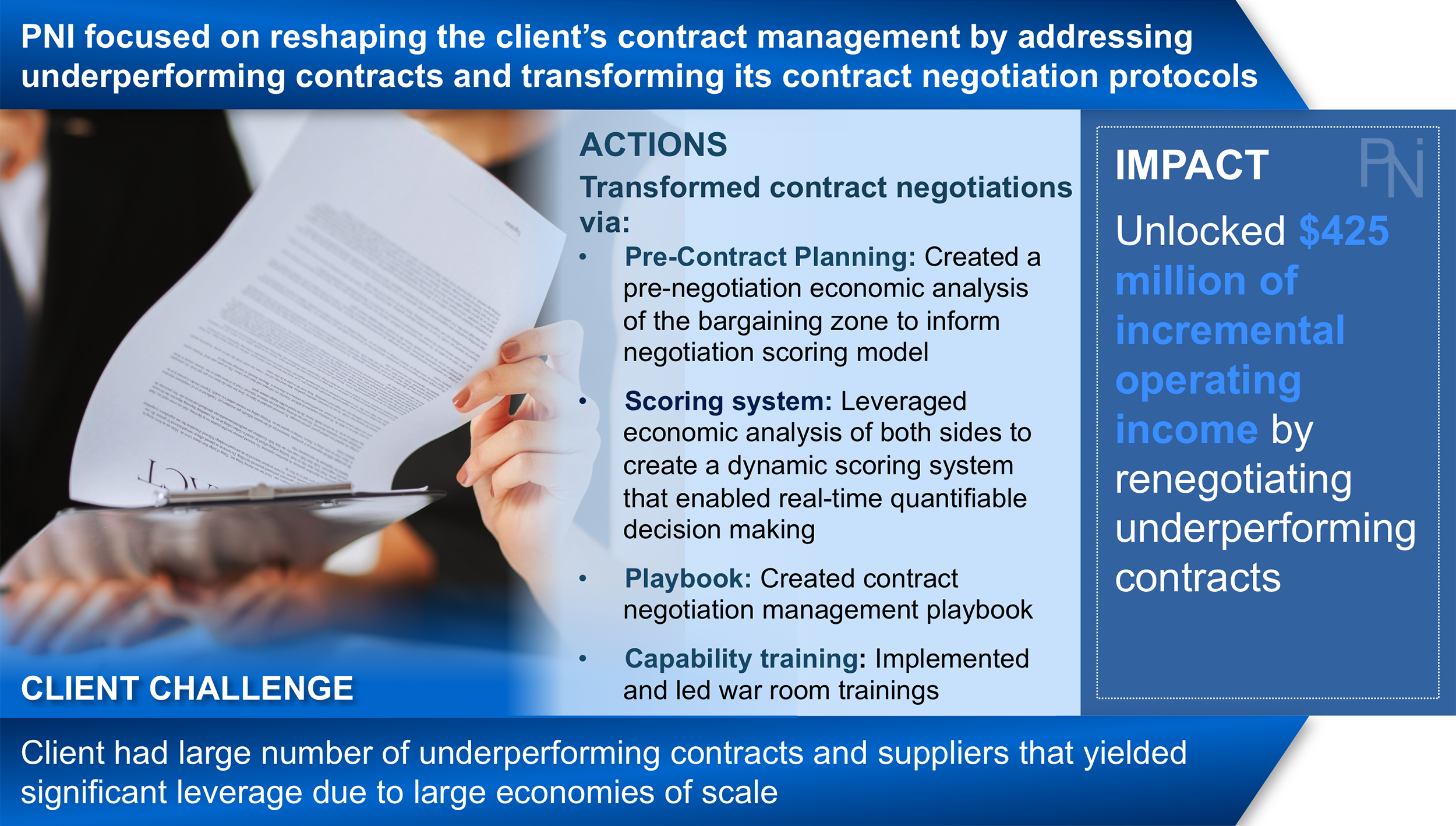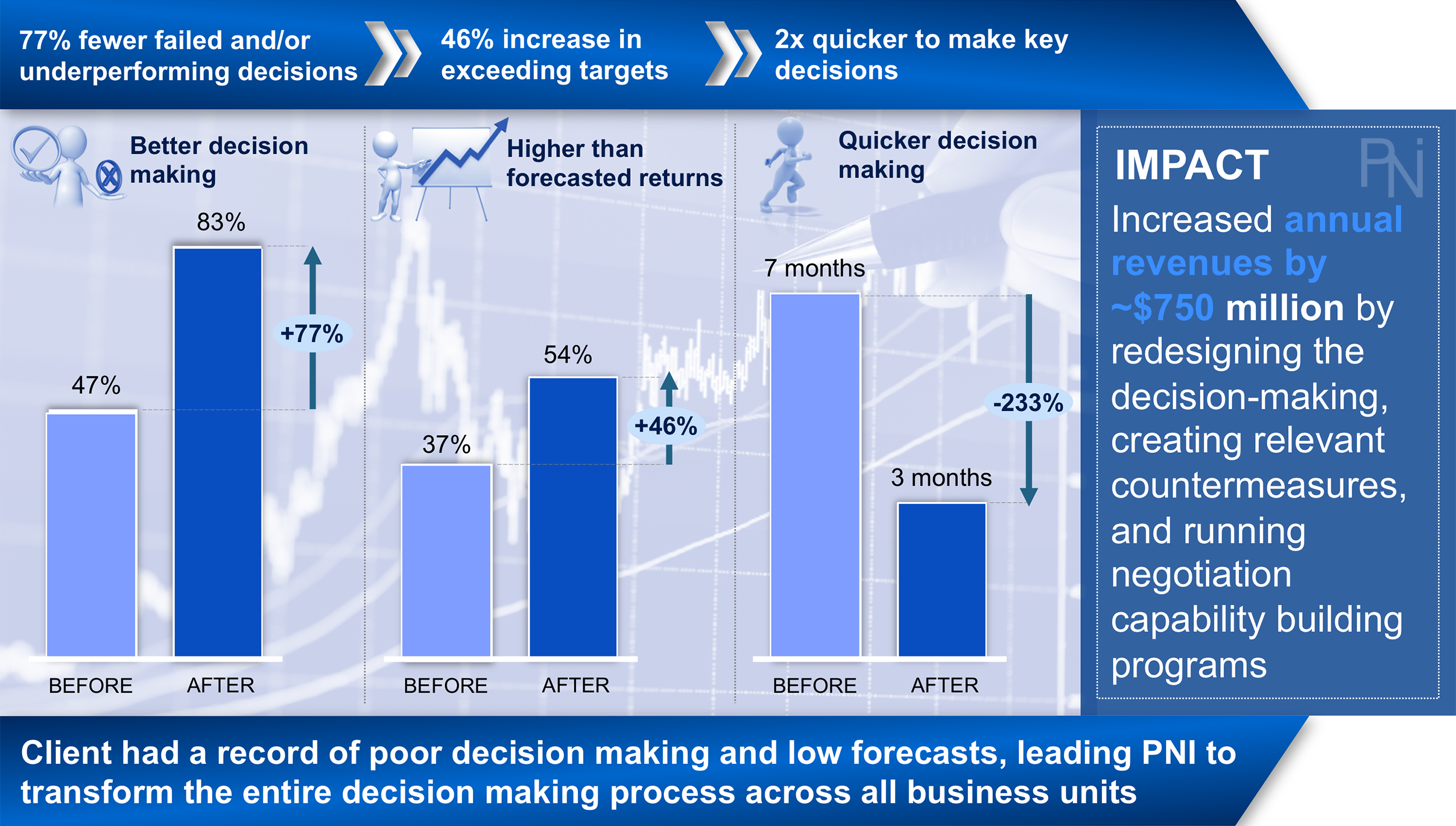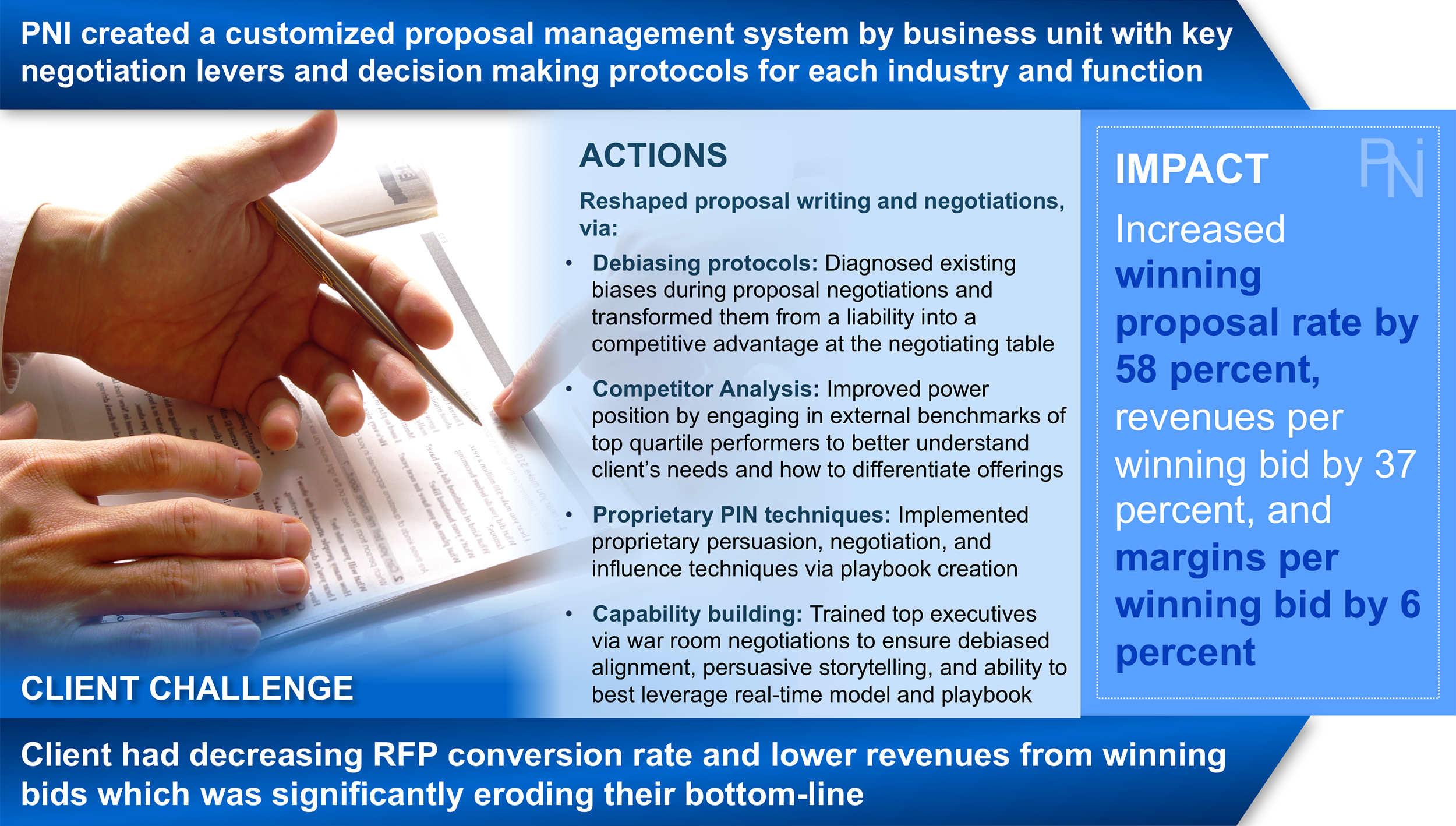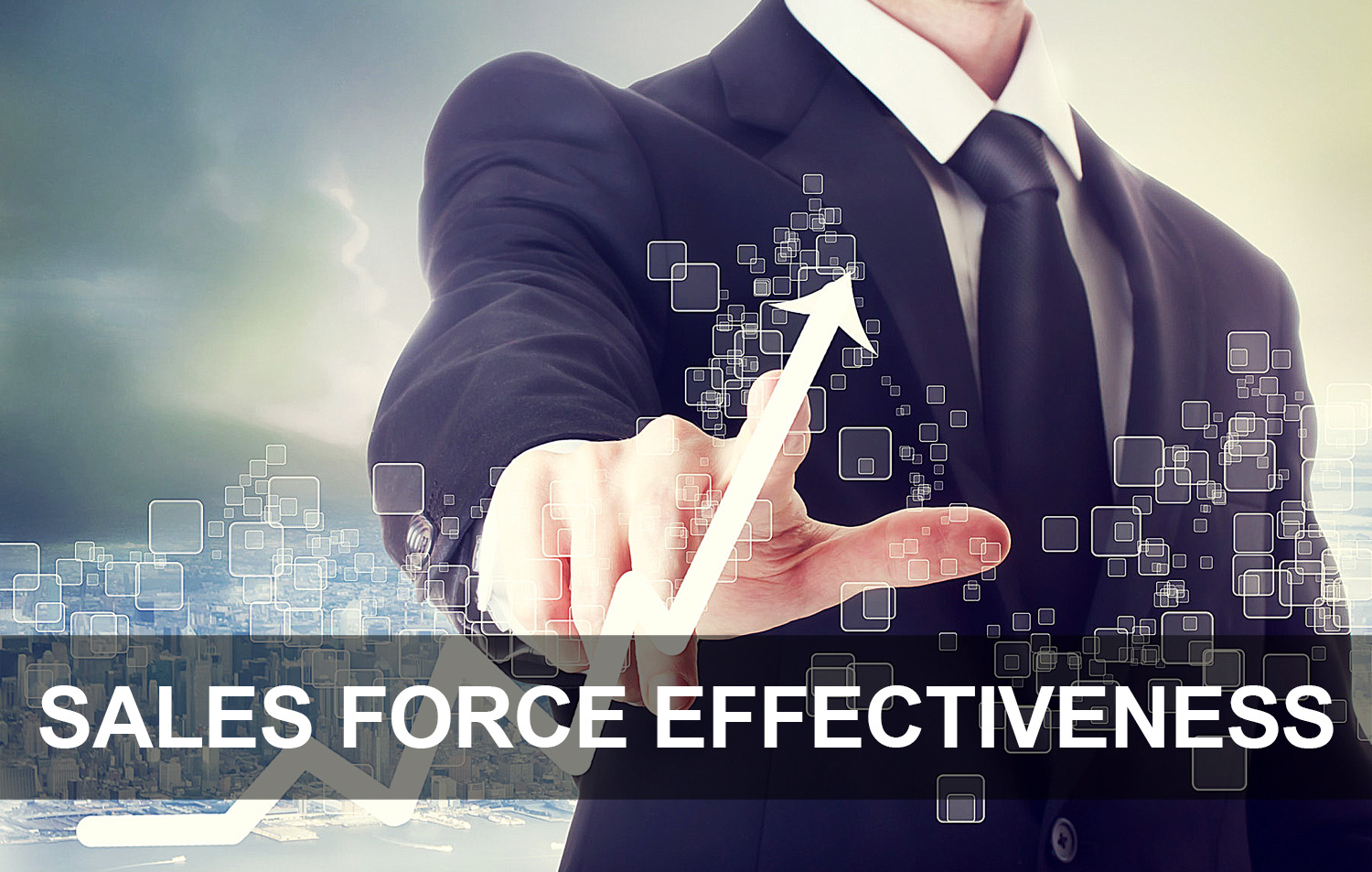Overview
Exhibit 1 (Click to Enlarge)
Exhibit 2 (Click to Enlarge)
Most of the areas holding back a company’s growth stem from internal obstacles rather than external market or competitive forces. Indeed, a recent survey by McKinsey & Company found that internal issues are the number one ranked barrier for effectiveness. In addition, Bain & Company found that 85 percent of the root causes for failure to maintain profitable growth are now internal to a company. In essence, the biggest threat to any organization is not disruption, not its competitors, not new entrants, and not even dissatisfied customers but rather the company itself. On the opposite side of this spectrum, organizational health winners (1) create a significant competitive advantage with high barriers to entry, (2) implement a sustainable growth ecosystem, and (3) create a profit engine (See Exhibits 1, 2, and 3). Simply, perhaps nothing is more crucial to sustainable profits, a successful brand, and long-term viability as organizational health.
Exhibit 4 (Click to Enlarge)
Organizational health and a company's culture is not simply a feel-good, kumbaya moment but rather a quantifiable, profit generating machine that either creates or destroys value (See Exhibit 4). The word “culture” connotes many different meanings for those in the corporate world. However, too often it is simply a misunderstood, buzz word that companies easily throw around in boilerplate speeches while concurrently failing to truly address culture head on. This happens because leaders often don’t see culture and thus organizational health as a true revenue generating platform such as sales, digital, and operation transformations.
Exhibit 3 (Click to Enlarge)
In our experience, culture can either be highly value creative or destructive. Successful companies often begin with an inspired culture that drives immense growth. However, over time, complexity and its value destructive influence can quickly turn that culture into meaningless words on paper. This ensures internal health problems abound which ultimately destroys the company from within. Simply, many companies experience what we label the “culture paradox” (See Exhibit 2). Simply, a great culture creates growth, growth creates complexity, complexity destroys that culture, and a poor culture destroys growth.
Exhibit 5 (Click to Enlarge)
Thus, any organization must look internally and get its own house in order by creating a culture that is lived and breathed by its employees (See Exhibits 2, 4, and 5). Then, and only then, will a company witness the level of organizational health and employee engagement needed to create innovation, customer loyalty, and sustainable growth. To overcome these internal, value destructive hurdles and become a real winner in this space we leverage our proprietary organizational health and culture transformation platforms to unlock significant profits and drive sustainable, embedded change.
Our Engagement Models & Frameworks
Our Approach
The days of being successful on merely a differentiated product or respected brand are over. A sub-par, let alone toxic culture coupled with organizational health pain points, permeate every facet of one’s business. As experts in organizational health transformation we leveraged our trademarked models including our (1) inside-out | bottoms-up™ model, (2) organizational health quadrant™, (3) 6-step culture framework™, and (4) culture paradox™ platform. In addition, and to ensure top-down alignment and sustainable change across the company, we take a holistic 360 degree approach to the transformation via (1) identifying and diagnosing organizational health pain points, (2) creating a customized action plan, and (3) implementing a rigorous implementation process to ensure firm-wide adoption rate and sustainability (See Exhibit 6 - Engagement Frameworks Gallery).
"Culture Paradox™" Dilemma
Culture Paradox™
Exhibit 7 (Click to Enlarge)
Successful companies often begin with an inspired culture that drives immense growth. However, as growth quickly transpires, complexity and its value destructive influence forms, turning that culture into meaningless words on paper that simply collects dust in employees' offices. Without psychological ownership these words never drive change, let alone an inspired, sustainable enterprise. This ensures internal health problems abound which ultimately destroys the company from within. As such, many companies experience what we call the “culture paradox” (See Exhibit 7). Simply, a great culture creates growth, that growth creates complexity, complexity destroys that culture, and a poor culture destroys any growth. This premise can be summarized by the following five points.
- Culture Is the Foundation to Growth: Growth begins with a defined culture. Simple, the first step to innovative products, customer advocates, and profitable growth is to create employee advocates that will create “wow” moments for your customers because you first created those “wow” moments for your employees.
- World-Class Culture Creates Growth: A world-class culture breeds profitable growth because employee engagement (i.e., inspired employee advocates) are highly correlated to customer loyalty, innovative products, and thus profits.
- Growth Creates Complexity: As companies grow, complexity creeps in which destroys that growth. This is a byproduct of loosing focus on maintaining a “bottoms-up” employee focused culture. A majority of the root causes for failure to maintain profitable growth are internal to a company because of uninvited complexity that creeps in over time.
- Complexity Destroys Culture: Companies being to lose focus which drives silos, internal stress, micromanagement, and processes for the sake of processes which destroys trust, autonomy, empowerment, and inspiration (i.e., culture).
- A Poor Culture Destroys Growth: Without an inspired culture any growth will be short-lived because there is no employee psychological ownership but instead an aspirational written culture that aimlessly attempts to define a company’s purpose and mission. Simply, employee engagement and inspiration are simply words on paper that won’t drive anything except value destruction and a false sense of security.
Exhibit 8 (Click to Enlarge)
A culture is a not a by-product of a company’s strategy, brand, or products. Instead, quite the opposite is true. The success of a company’s brand, including its product, customer loyalty, and profitable growth are all byproducts of a company’s culture or lack thereof. In essence, the biggest threat to any organization is not disruption, not its competitors, not new entrants, and not even dissatisfied customers but rather itself. A culture is not simply a feel-good, kumbaya moment but rather a quantifiable, profit generating machine that either creates or destroys value (See Exhibit 8). Any company should frequently self-assess to ensure it hasn't unknowingly traveled onto the "culture paradox" loop. A status quo approach can prove fatal because over time the value destructive momentum of this "culture paradox" may be too difficult to course correct. Instead, companies should take a proactive approach in creating an inspired culture that is lived and breathed by its employees. In turn, its employees will be inspired to create a strong brand, innovative products, and "wow" customer experiences.
Inside Out | Bottoms-Up™
- Organizational Health Transformation Model -
Inside-Out | Bottoms-Up™
Exhibit 9 (Click to Enlarge)
Compounded by the aforementioned culture paradox, companies face ever-quickening innovation cycles. With this quickening speed additional complexity is created and oftentimes unknowingly fostered. In the wake of this landscape shift, most companies have unfortunately neglected enterprise focus, company-wide alignment, employee engagement, and a culture of empowerment because a "top-down | outside-in" instead of a "bottoms-up, inside-out" approach is taken.
Exhibit 10 (Click to Enlarge)
Consequently, most stagnant growth occurs not from external forces but rather from internal issues (See Exhibit 10). Indeed, Bain & Company found that 85 percent of the root causes for failure to maintain profitable growth are now internal to a company. This challenge typically stems from matrix driven, hierarchical bureaucracies that unknowingly prioritize a top-down, outside-in approach all of which fosters complexity instead of simplicity and chaos instead of focus. This in turn creates a silo-driven company that is (1) an imitator instead of an innovator, (2) a complacent, slow decision-maker instead of a challenger of the status quo, and (3) a seeker of individual merit instead of a focused, aligned team that reaps the benefit of enterprise-wide collaborative synergies. Simply, this typical organizational health conundrum equates to significant energy leakage and ultimately major value destruction.
Exhibit 11 (Click to Enlarge)
To avoid this highly erosive, top-down undercurrent, our organizational health transformations are built on the premise that an employee first mindset serves as a gateway to product innovation, service excellence, and ultimately sustainable growth. This can be achieved via our proprietary "inside-out | bottoms-up" model (See Exhibits 9, 11, and 12). Regarding the “inside-out” element, a company must look internally at creating a culture that creates raving employee advocates before it can expect to create raving customer advocates or innovative products. In addition, the “bottoms-up” element indicates a renewed focus on the frontline as the heart, soul, and pulse keepers of the organization takes place at this stage. Typically, the least paid staff are the ones that have the most touch points with the customer. However, these very employees are traditionally the least empowered because a tops-down instead of bottoms-up approach is generally taken, equating to significant customer pain points and value destruction.
Exhibit 12 (Click to Enlarge)
The premise for this inside-out | bottoms-up model rests on the following: while excessive rules may work for compliance, choice is a far better option for bringing the best out of a company and its employees. Simply, choice is the fuel for an ownership mindset/engaged employee, ownership is the fuel for learning, learning is the fuel for innovation, innovation is the fuel for both distinctive products and world-class customer experience, and distinctive products and customer experience is the fuel for profitable growth. For example, Google allows their engineers to spend 20 percent of their time working on anything they like. Google understands the power of employee autonomy, empowerment, and choice. Consequently, in a given year, typically half of Google’s new products are created from this 20 percent of self-guided work, including Gmail, Orkut, and Google News.
Exhibit 13 (Click to Enlarge)
Without an employee first mindset a domino of value destructive undercurrents start overtaking an organization, including (1) poor employee engagement, (2) high employee turnover, (3) low employee productivity, (4) stifled creativity and poor innovation, (5) poor customer service, (6) low customer loyalty, (7) slow decision-making, (8) internal competition stemming from silos, and (9) stagnant profitable growth. Our research and client engagements illustrate that improving employee engagement is highly correlated to improving customer experience and profitable growth. In its most striking form each dollar invested in improving employee engagement can reap up to a 4X ROI in customer engagement leading to revenue increases of at least 12 percent and greater (See Exhibit 13).
Exhibit 14 (Click to Enlarge)
In addition, and according to Gallup, highly engaged organizations have double the rate of success of lower engaged organizations while also enjoying significant improvements in profitable growth. On the flip side of this, and according to another Gallup study, almost 70 percent of employees are either destroying or not creating any value day in and day out (See Exhibit 14). Simply, only 30 percent of employees are engaged in their work. With an up to 4X ROI the investment decision is simple. The underlying issue to this lack of engagement begins with leadership, which snowballs downward into siloed groups that lack empowerment, resources, and focused alignment regarding the purpose and goal of the company. As illustrated, most companies unfortunately neglect employee engagement or think of it as an afterthought because of a top down versus bottoms-up | inside-out approach. In all actuality employee engagement should be the main emphasis because the domino effect of either growth or value destruction begins internally with employees. Remember, a company's people are its greatest asset – more than its brand, products, or customers. If a company gets the employee element right a great brand, product, and customer base will occur almost automatically.
Simply, if a company wants an enthusiastic market outlook, it must first create an inspired internal culture. Concurrently, if a company wants successful leaders, it must first create successful employees from the bottom-up. Thus, the first step to profitable growth and raving customers is to create a culture of raving employees. Then and only then will employees will be inspired and engaged to create those “wow” moments for customers because the company first created those "wow" moments for its employees. Our "inside-out | bottoms-up" model will help any organization on this journey, by bringing back engagement, choice, empowerment, focus, alignment, and an ownership mindset to the entire enterprise.
6-Step Transformation Framework
Our Approach
Exhibit 15 (Click to Enlarge)
Our six-step culture transformation framework transitions a company from the bottom to top quartile in organizational health. We find that a core underlying problem contributing to cultural pain points stems from that fact that employees and thereby customers take a back seat to the company’s brand, product, and financial results. This stems from hierarchical, bureaucratic cultures that are ridden with processes for the sake of processes and full of micromanagement instead of empowerment. This atmosphere stifles creativity, innovation, inspiration, and ultimately top and bottom line growth. We have a proven track record of overcoming these issues by leveraging our six-step organizational health and culture transformation framework to drive short and long-term value unlocking benefits (See Exhibit 15). See below for an overview of each phase.
Framework Journey Overview
Phase 1
1. Ensure Psychological Ownership: Many companies have a written culture but most would be hard pressed to tell you what that culture is. Simply, they are merely lofty words on paper. Without psychological ownership these words never drive change, employee empowerment, or employee engagement. Companies must create a customized action plan and culture with the collective agreement of the entire organization. Simply, ensure the voice of the employees – from the bottom-up – is involved via initiatives such as focus groups, town hall meetings, employee engagement/eNPS surveys, customer journey solutions, and enterprise problem solving.
Phase 2
2. Reward Transparency: The right culture puts employees first while ensuring the company rewards – not punishes – its employees for transparency in an effort to solve the company’s most pressing problems. Otherwise, a company promotes a culture of “yes people” which gives way to groupthink - the destroyer of innovation, employee engagement, and profitable growth. There is a high correlation between the level of employee involvement in key decision-making and the successful adoption of those initiatives. Thus, employees must be transitioned from an “employee” mindset, to a “partner” mindset, and ultimately to an “ownership” mindset.
Phase 3
3. Bring Focus and Enterprise Alignment: Leaders must ensure organizational wide focus and alignment. Simply, to have sound decision-making you must know where you want to go (i.e., what is the aspirational goal). Otherwise, it’s analogous to getting in a car and saying we’re going to drive around. Great – but where? Without focus and alignment your company will waste time going around in circles. Instead, leaders must focus on getting “everyone on the bus” via ensuring alignment, focus, empowerment, and engagement via an “inside-out | bottoms-up” approach. This ensures minimal energy and financial leakage.
Phase 4
4. Usher in Choice and Learning: While excessive rules may work for compliance, choice is a far better option. Simply, choice is the fuel for an ownership mindset/engaged employee, ownership is the fuel for learning, learning is the fuel for innovation, innovation is the fuel for both distinctive products and world-class customer experience, and distinctive products and customer experience is the fuel for profitable growth. Thus, empowerment, choice, and the authority to take action builds engagement – the foundation of any strong culture. Simply, micromanagement is adestroyer of organizational health, innovation, and long-term value.
Phase 5
5. Empower from the “Bottom-Up” – Not “Top-Down”: Engaged employees must be cultivated through an enlightened culture and supported by inspiring leadership. To accomplish this, an organization must take a renewed focus on the frontline as the heart, soul, and pulse keepers of the organization takes place at this stage. Typically, the least paid staff are the ones that have the most touch points with the customer. However, these very employees are traditionally the least empowered because a tops-down instead of bottoms-up approach is generally taken, equating to significant customer pain points, stagnant growth, and long-term value destruction.
Phase 6
6. Drive an “Inside-Out” not “Outside-In” Emphasis: Most of the areas holding back growth don’t stem from external market or competitive forces but rather stem from internal obstacles. Leaders must look internally at leading a culture that creates raving employee advocates before it can expect to create raving customer advocates or innovative products. Remember, the first step to innovative products, customer advocates, and ultimately profitable growth is to create employee advocates that in turn will be inspired to create those “wow” moments for your customers because you first created those “wow” moments for your employees.
Org Health benefits
Financial Benefit From Our Culture & Org Health Transformations
Exhibit 16 (Click to Enlarge)
Our change management, org development, and culture transformations drives revenue growth and profits by tackling head on the key levers that impact the enterprise, including employees, product innovation, and customers. Simply, we believe distinctive organizational health and culture transformations are where a (1) culture first, (2) distinctive employee engagement, (3) customer-centric mindset/customer engagement, and (4) innovative product/service offerings collide. When all these aforementioned elements are successfully working in unison, profound top and bottom line benefits are unlocked across the entire organization (See Exhibits 16 and 17).
Exhibit 17 (Click to Enlarge)
Our “organizational health quadrant” illustrates the key revenue and cost drivers associated with either top or bottom-quartile organizational health (See Exhibit 17). Specifically, this quadrant highlights five key drivers that impact culture and ultimately profit, including (1) employee turnover, (2) employee productivity, (3) employee engagement, (4) customer engagement, and (5) customer recommendations (this includes customer advocacy and customer acquisition costs). We see that most companies fall within Quadrants 1, 2, and 3, leaving typically less than 3-5 percent of companies that achieve Quadrant 4 status (i.e., organizational health and culture excellence). In its simplest form, our “organizational health quadrant” illustrates that there are key revenue and cost implications associated with either top or bottom-quartile internal health (See Exhibits 17 and 18). We leverage this quadrant and the accompanying five drivers by ensuring these core KPI's are reached by the enterprise. In so doing, our engagements transition companies to Quadrant 4 via our proprietary inside-out | bottoms-up model combined with our 6-step culture transformation framework.
Exhibit 18 (Click to Enlarge)
Finally, our organizational health and culture transformations aren’t simply a feel-good, kumbaya moment that inspires employees while concurrently draining a company’s resources. Instead, by transformation's end we ensure the following eight key areas are maximizing both their revenue and costs benefits. These levers include (1) engaged leadership, (2) defined culture, (3) inspired work environment, (4) low employee turnover, (5) high employee engagement, (6) significant ownership, passion, & productivity, (7) high customer engagement, and (8) high customer loyalty (See Exhibit 18).
1. Engaged Leadership: Poor decision-making from a lack of cultural alignment is often the number one value destroyer. Culture begins from the top down allowing for alignment and focus across actions and behaviors which ultimately drives customer service excellence.
2. Defined Culture: Culture forms the backbone of any organization and is the pillar for driving both revenue and cost benefits. However, without psychological ownership these are merely empty words on paper. According to McKinsey & Company's survey of over 2,000 respondents, culture is the most significant barrier to effectiveness.
3. Inspired Work Environment: How an employee feels about their work environment is equally as important as the actions that follow. An empowered, employee first environment stemming from an "inside-out | bottoms-up" model ensures (1) increased revenue stemming from greater productivity and (2) lower costs stemming from decreased turnover.
4. Low Employee Turnover: Employee turnover can significantly bloat costs and drain an organization of its talent. By minimizing turnover, profits increase as a byproduct of fewer onboarding costs. Revenue increases as a byproduct of improved productivity which equates to greater revenue and profit per employee.
5. High Employee Engagement: The mentality “I bring my best to work every day” is a must for productivity, enterprise effectiveness, customer loyalty, and innovation. For every $1 invested into employees an up to $4 ROI is witnessed with customers.
6. Significant Ownership, Passion, & Productivity: Employees can either have an “employee” or “owner” mindset. An "employee" mindset produces a begrudging mentality which drains financial performance while an “owner” mentality produces advocates for the organization that not only meet but also exceed customer expectations.
7. High Customer Engagement: Customer engagement is where an enterprise customer-centric mindset, distinctive employee engagement, and a pain point free customer journey collide. Without this engagement, customer lifetime value declines, acquisition costs increase, and growth stagnates, producing internal and external pain points.
8. High Customer Loyalty: Customer loyalty improves net promoter scores and creates customer brand builders, equating to decreased customer acquisition costs, improved recommendations, decreased marketing costs stemming from organic influencers, enhanced brand perception, and increased revenue.
In essence, nothing is more crucial to sustainable profits, a successful brand, and long-term viability as organizational health. Our proprietary and holistic transformations create organizational health winners that will reap not only revenue growth but also sustainable cost savings across the enterprise.
Client Results
Case Studies
Exhibit 19 (Click to Enlarge)
Example #1 (See Exhibit 19): Client had a record as a bottom quartile performer, resulting in poor customer loyalty, many customer pain points, and high employee turnover. Client results included ~45 percent increase in employee engagement and ~49 percent decrease in employee turnover. As employee engagement increased so too did customer engagement, which ultimately increased revenue by ~14 percent. The once worst-performing business unit became the new standard of excellence in the industry. The client was chosen as a distinguished company for customer excellence because it first increased employee engagement, reduced turnover, and decreased customer pain points.
Exhibit 20 (Click to Enlarge)
Example #2 (See Exhibit 20): Client had a record of poor employee engagement and thus sought to improve employee productivity, ownership, and voice of employee (e.g., eNPS) scores as a way of increasing customer loyalty and thus revenue. We transformed the client’s employee engagement as seen via: (1) increasing voice of employee survey scores by ~59 percent and (2) transitioning the client from the bottom to top quartile in customer satisfaction scores as illustrated via every dollar spent on organizational wellness yielding ~200 percent ROI with customers.
Exhibit 21 (Click to Enlarge)
Example #3 (See Exhibit 21): Client had only ~20 percent of its employees engaged at work plus bottom-quartile customer loyalty as measured by Net Promoter Scores. We transformed the client's organizational health, including its culture and employee engagement. For every $1 invested in employee engagement, the client saw up to a $4 ROI with customers. Overall, customer loyalty increased by ~35 percent and revenue increased by ~12 percent within the first year.
Exhibit 22 (Click to Enlarge)
Example #4 (See Exhibit 22): Client had a record as a mediocre performer in a saturated field of top performers. We performed a digital and organizational health transformation, earning the client the top spot for customer satisfaction (an increase of 57 percent) and (2) propelling the client to the top spot for best place to work by increasing employee engagement. This was accomplished via:
- Performing a digital and organizational health transformation, including redesigning the entire culture and digital implementation model via our “inside-out | bottoms-up” model
- Improving company wide digital transformation and customer experience cross-functional collaboration
- Transforming the customer journey via (1) implementing a data strategy optimization for greater personalization and (2) transitioning a multi-channel digital platform approach to a seamless, omnichannel delivery
Additional Client Results
Additional Transformation Services
Our digital transformation engagements drive significant growth, innovation, and organizational success ensuring distinctive (1) employee empowerment, (2) product differentiation & (3) customer experience
Our customer experience work ensures top customer engagement/loyalty, top quartile net promoter scores, and a pain-point free customer journey, equating to 12 percent and greater revenue increases
Our sales transformations includes key negotiation and behavioral science levers, allowing our clients to experience revenue improvements of 12 to 33 percent and margin increases from 6 to 17 percent
Our M&A and PE engagements optimize purchase price while ensuring target synergies are fully reached, resulting in 28 to 77 percent higher RTSR and ~37 percent increase in deal closings
Our contract transformations increase profits up to 31 percent, improve the likelihood of reaching an agreement by ~95 percent, and increase chances of Pareto efficiency by ~139 percent
Our procurement and supply chain transformations help corporations achieve sustainable cost savings from 16 to 63 percent typically followed by additional cost savings of 2 to 4 percent annually























